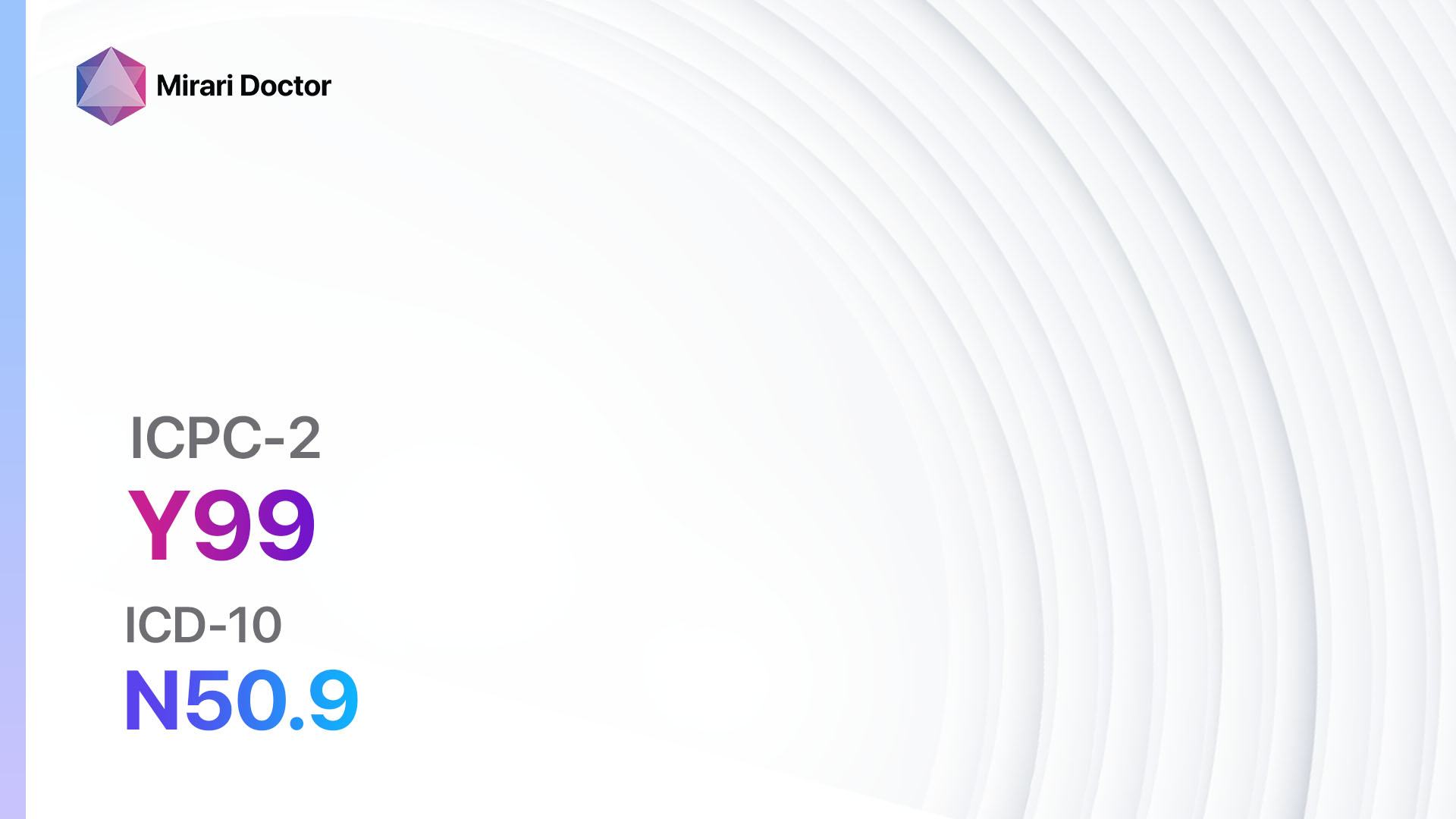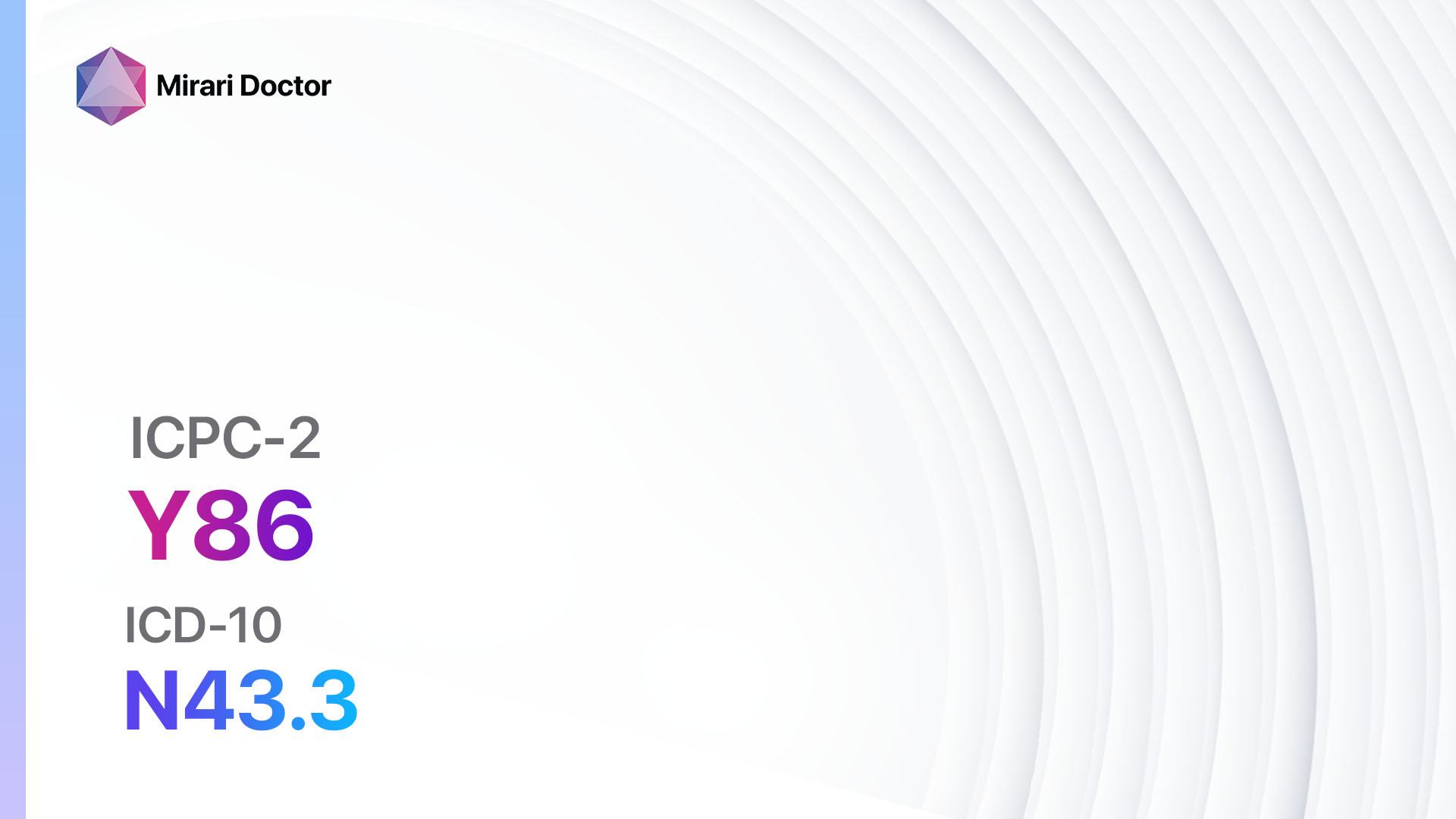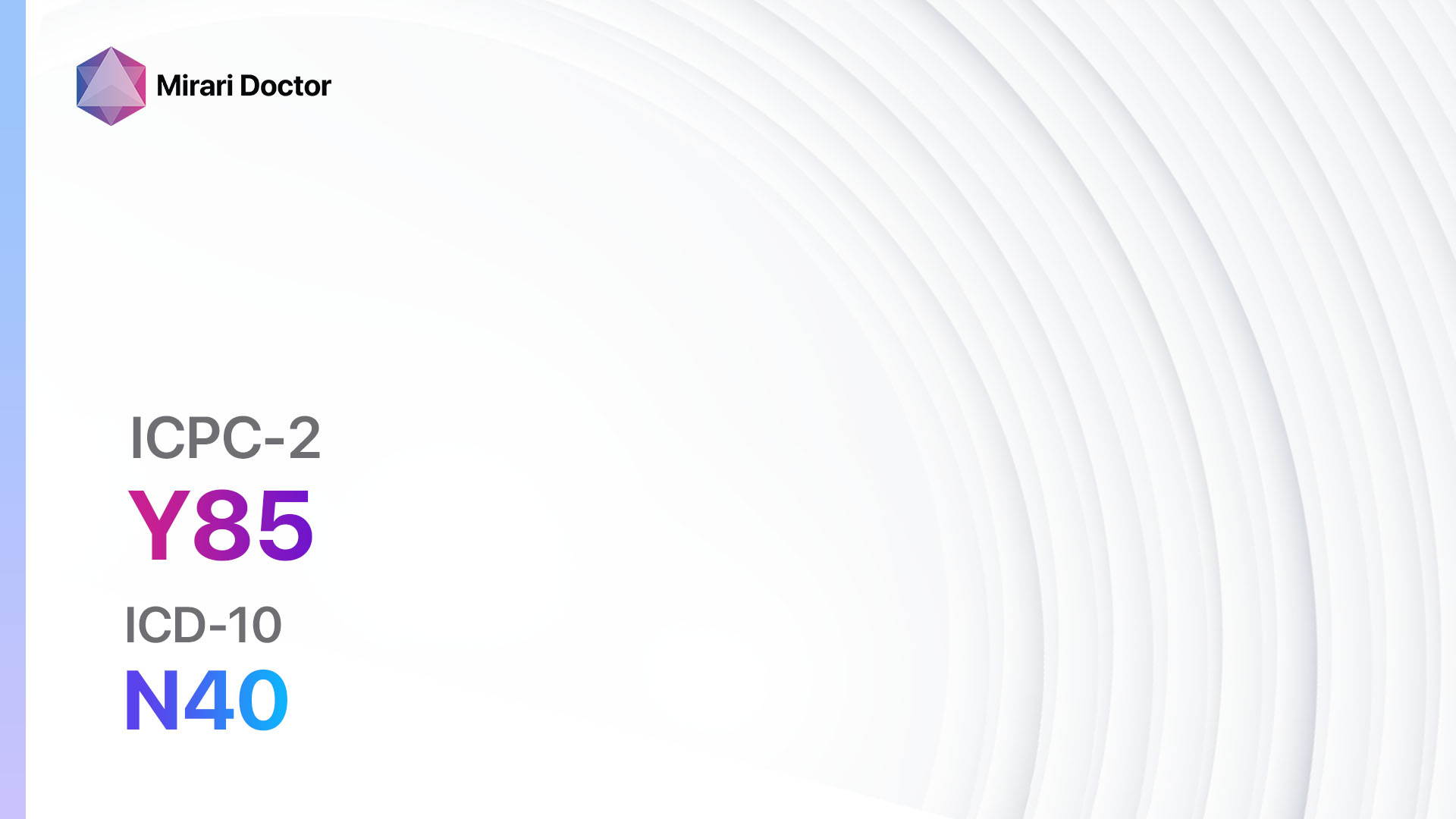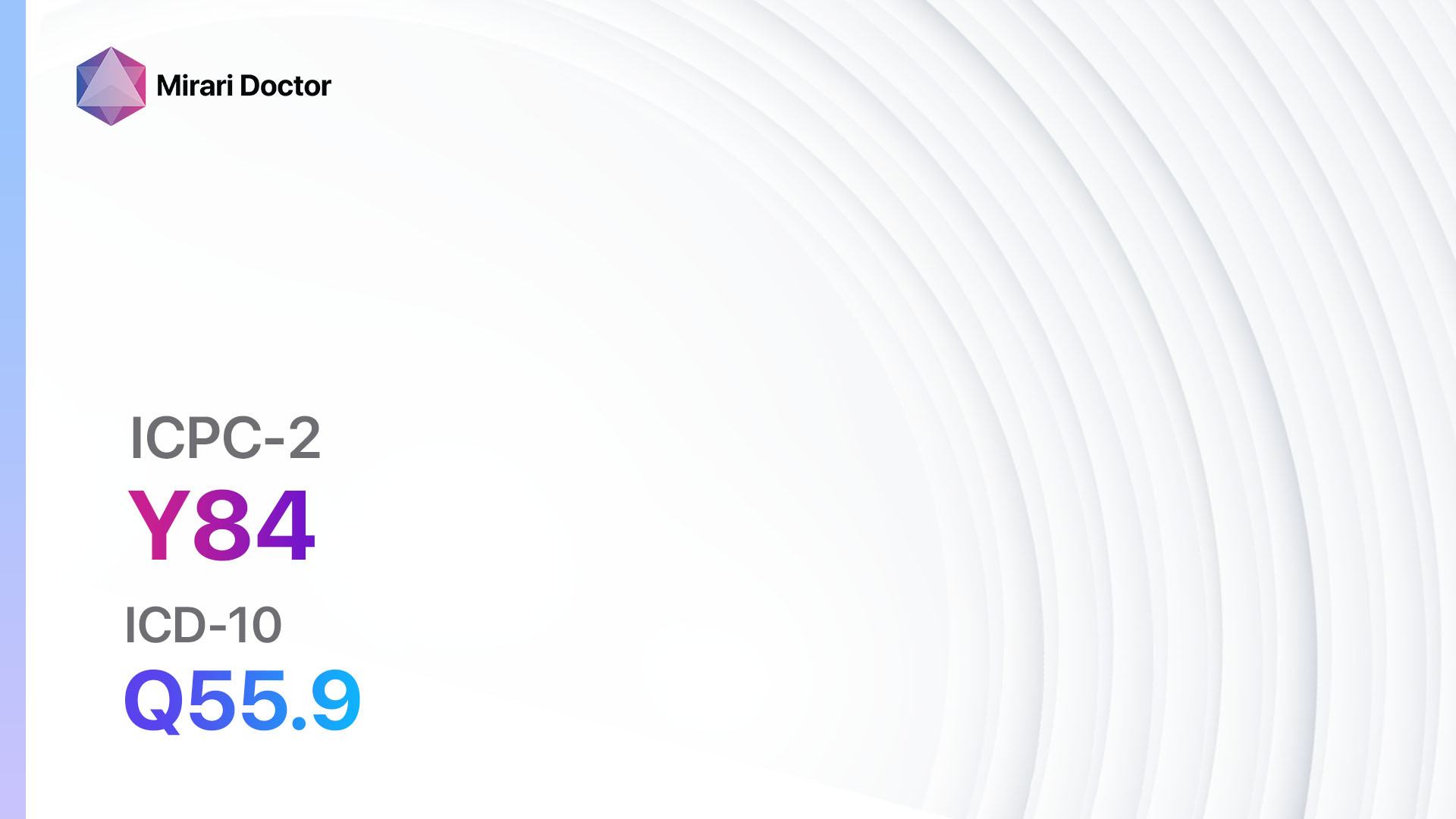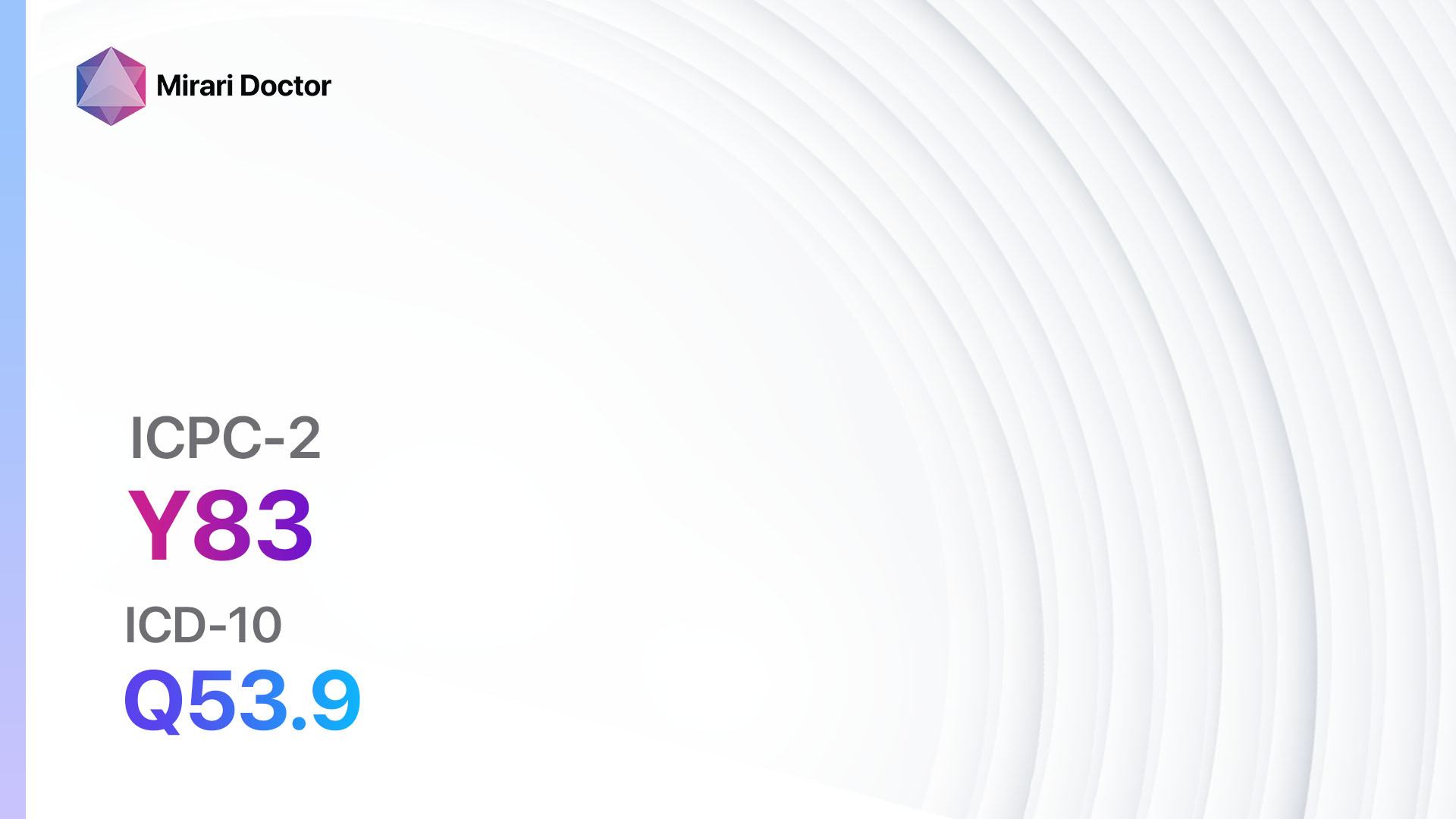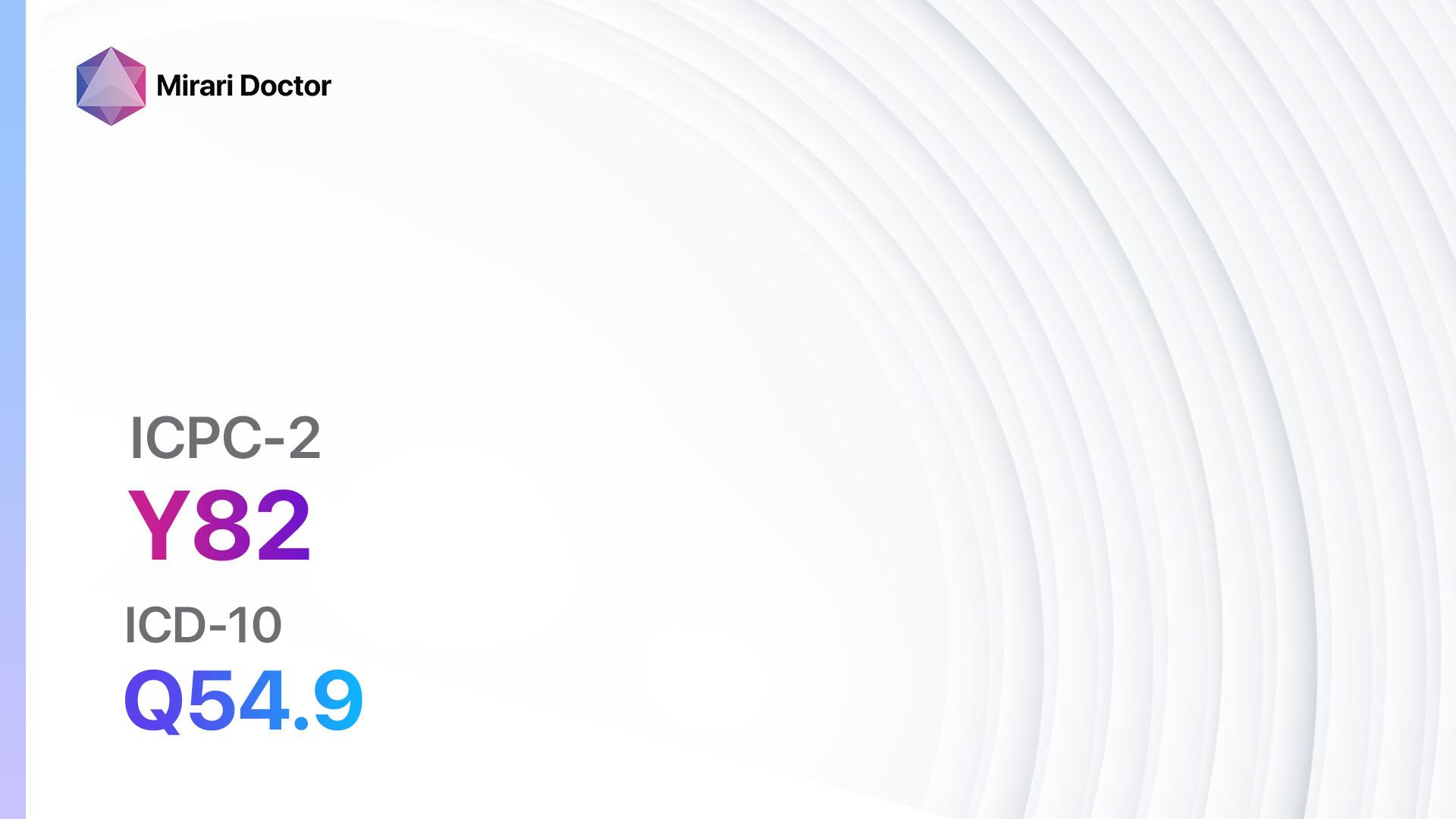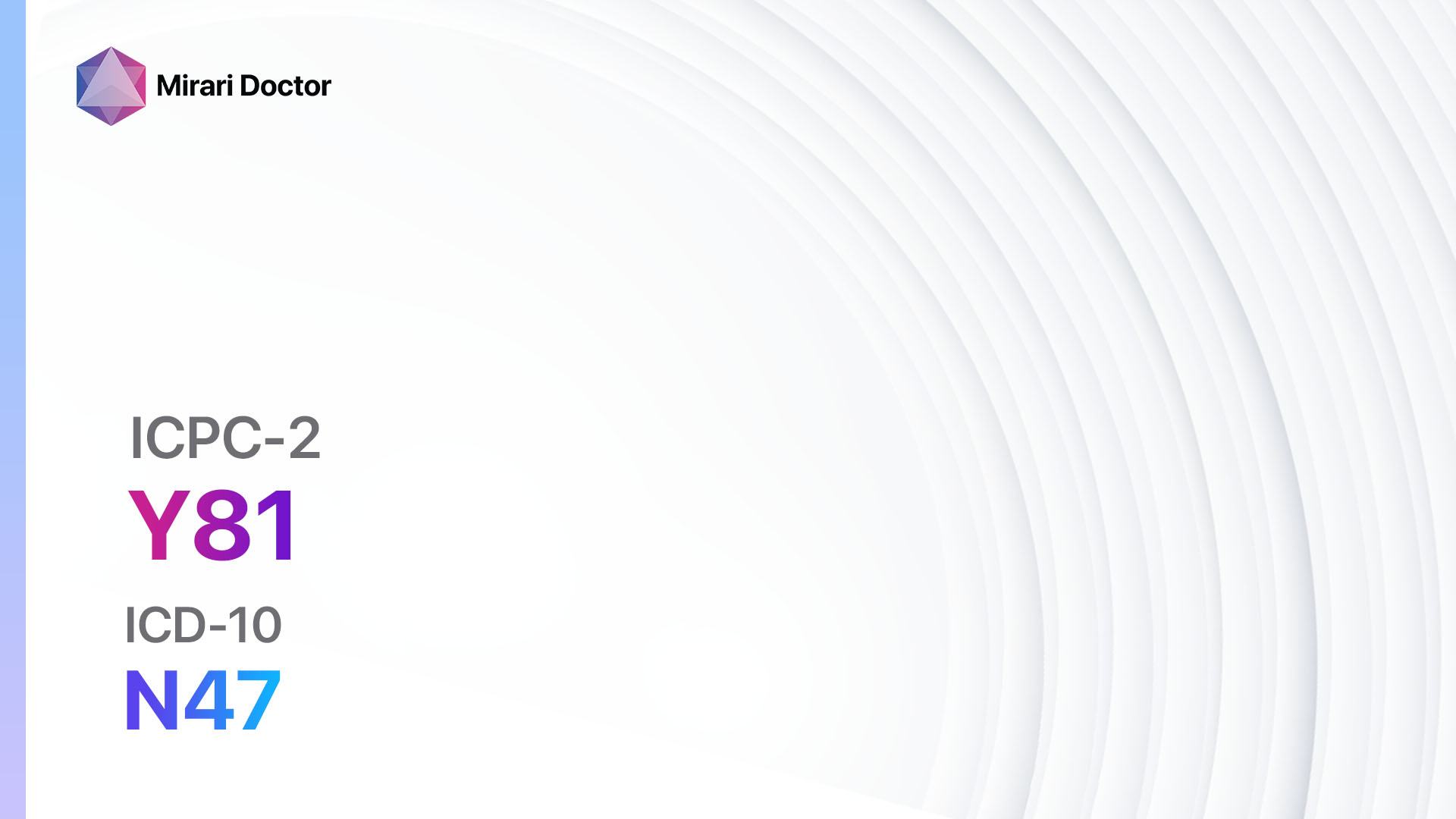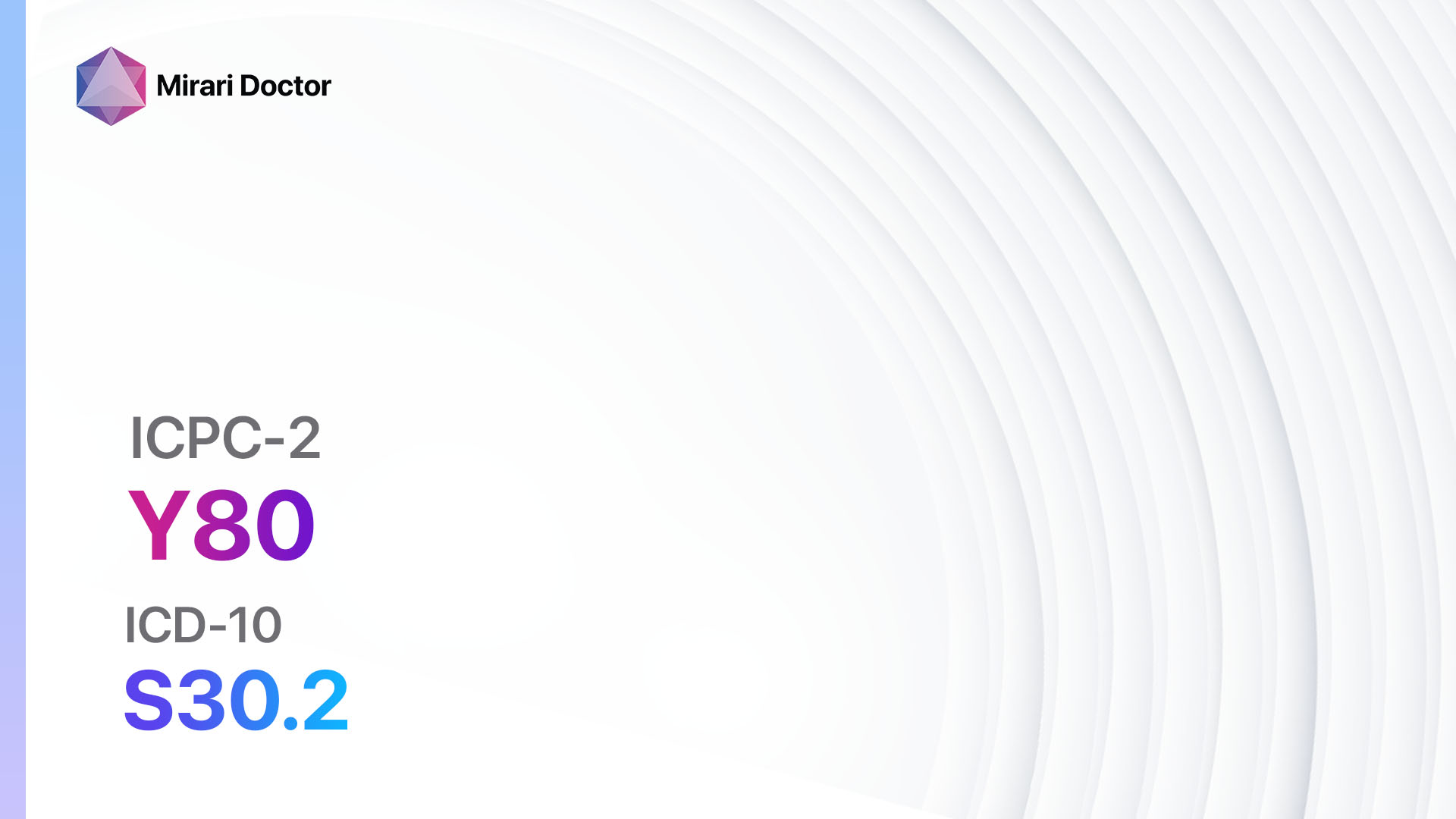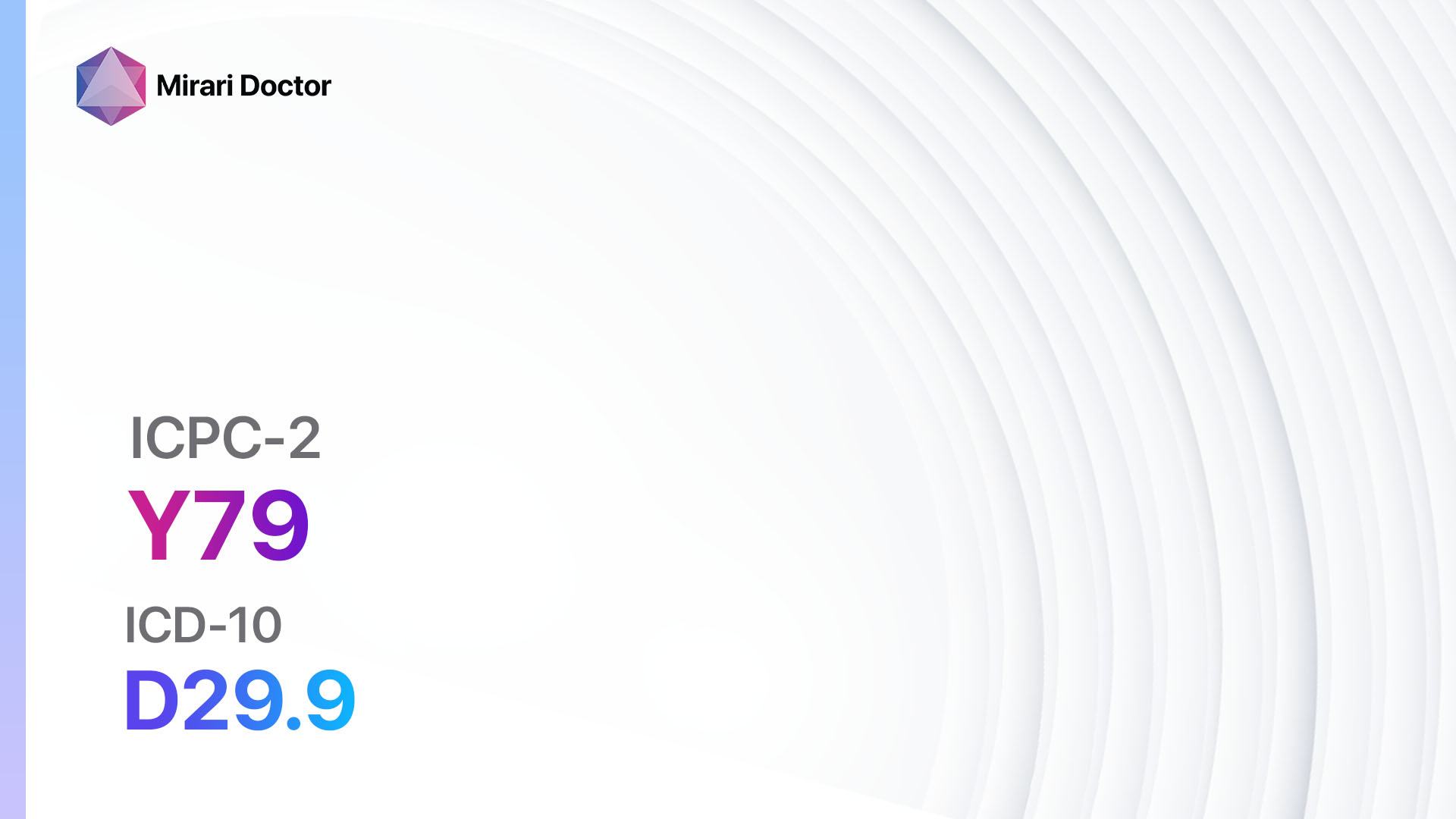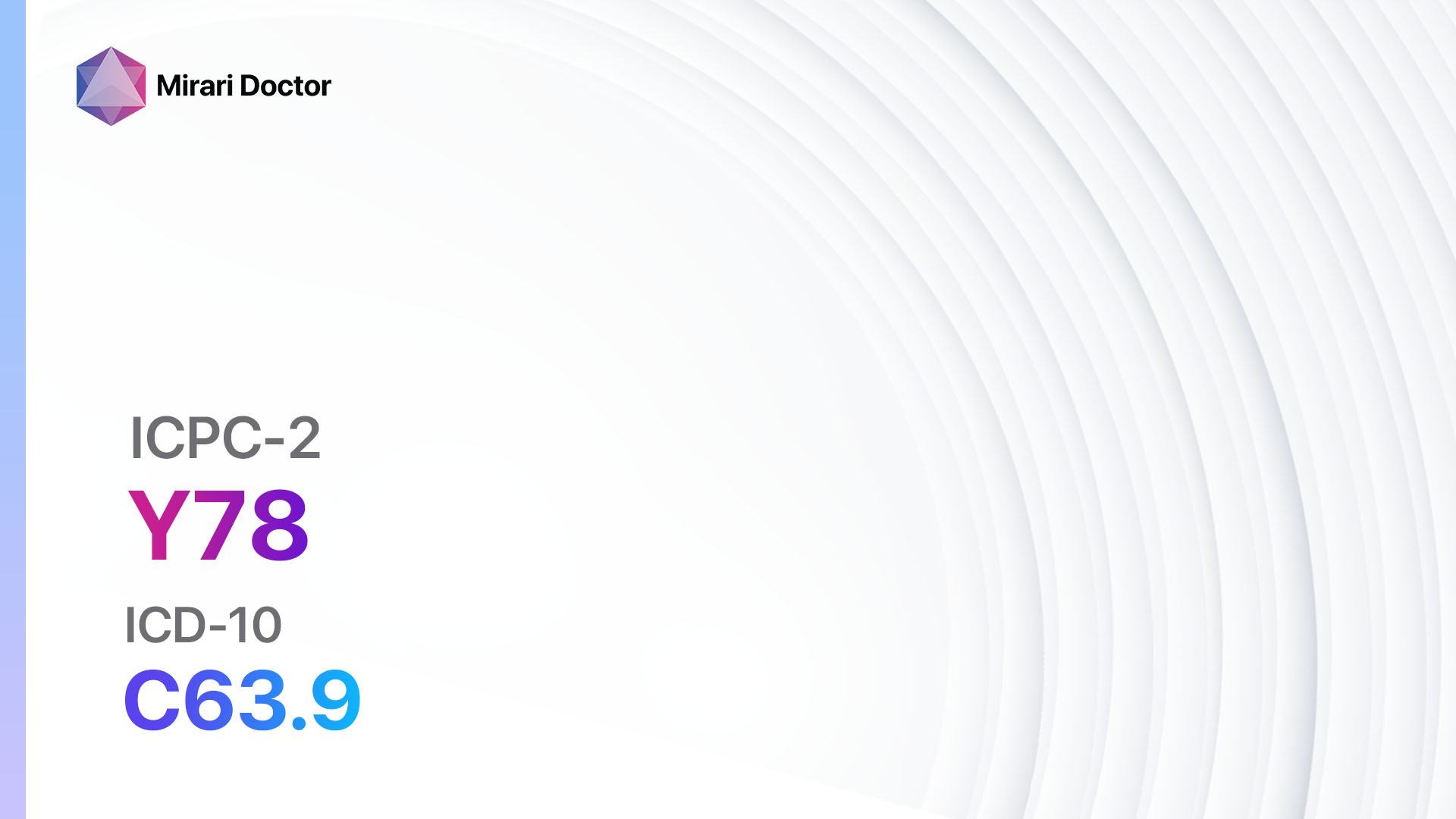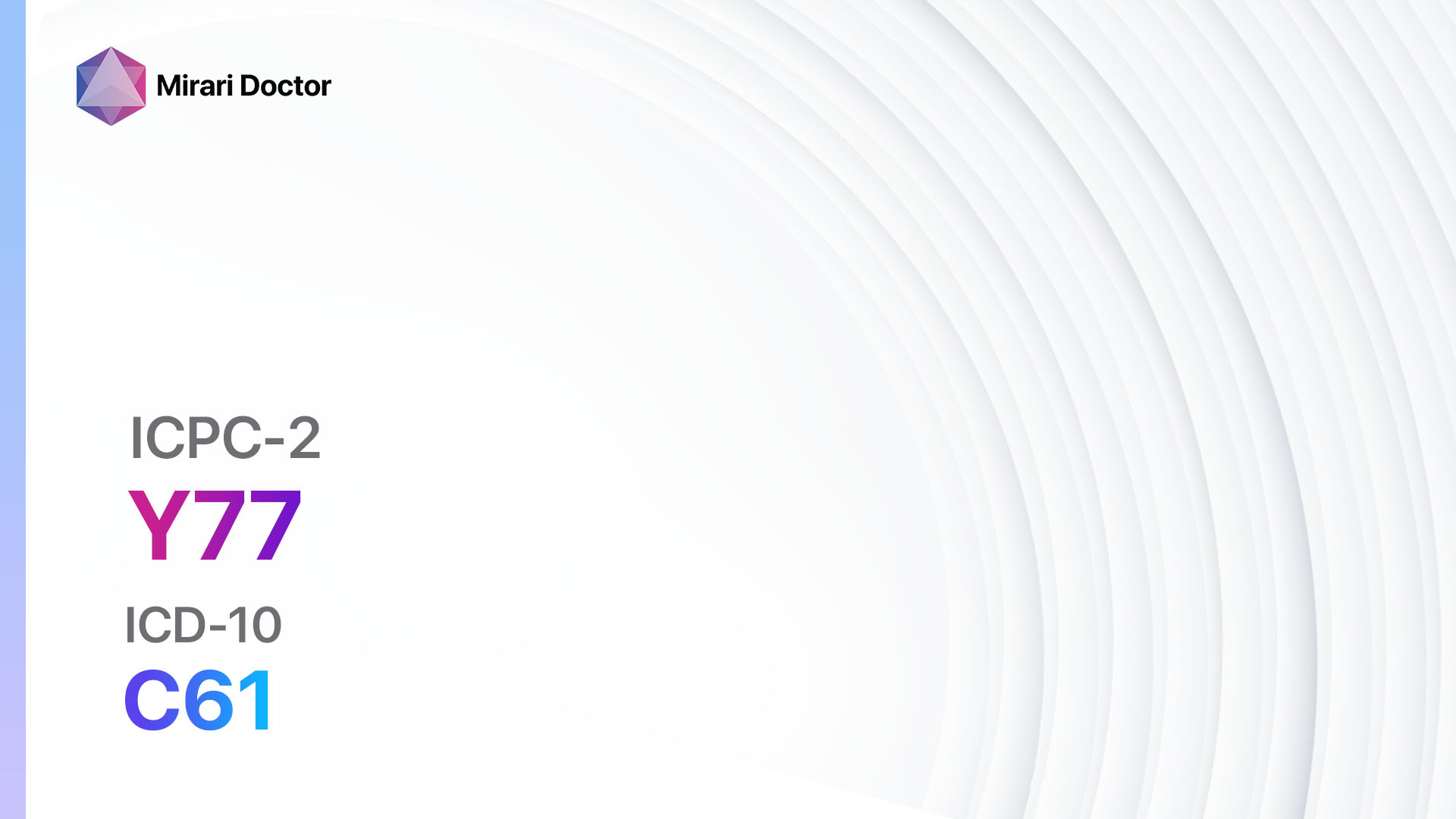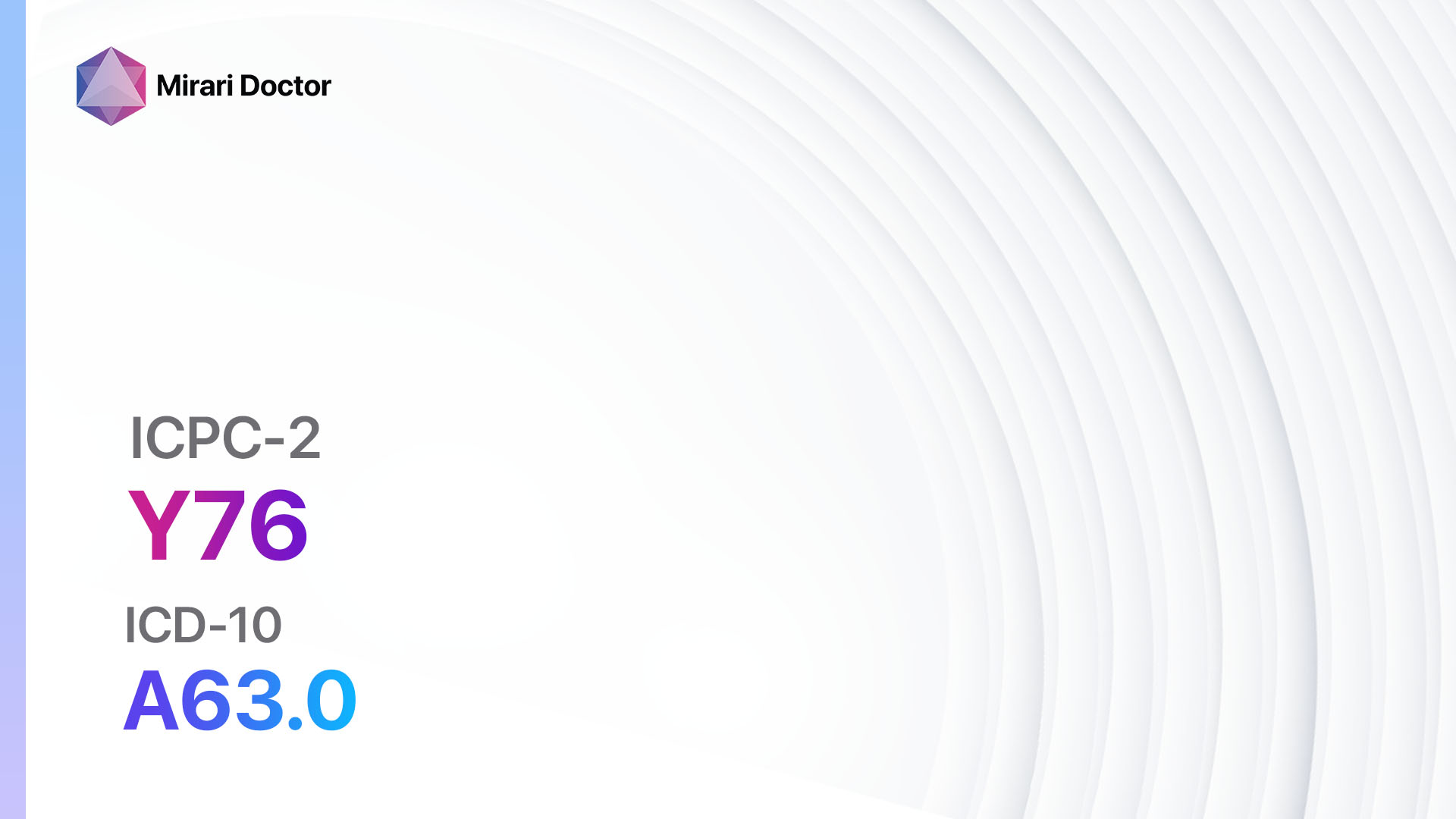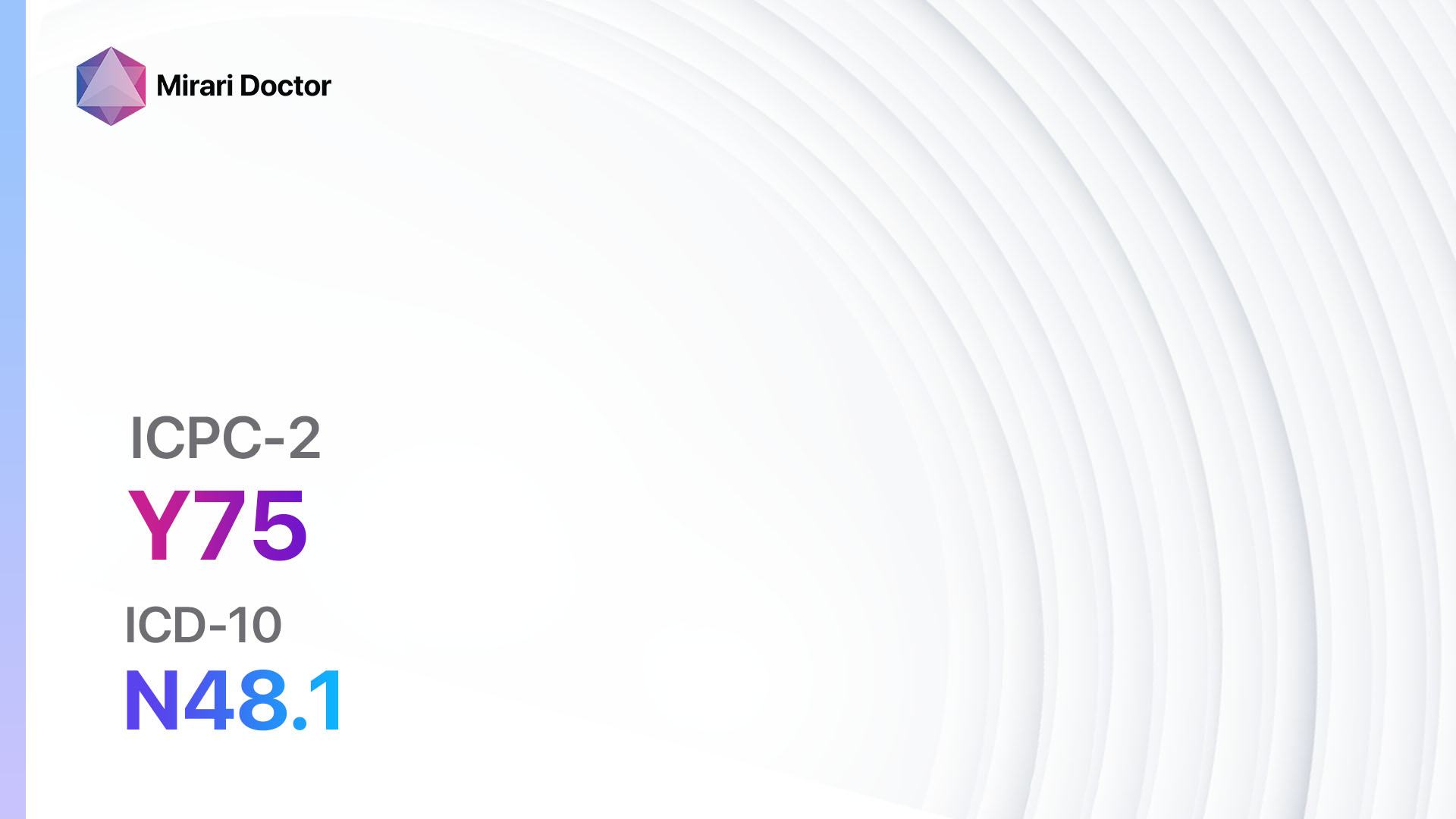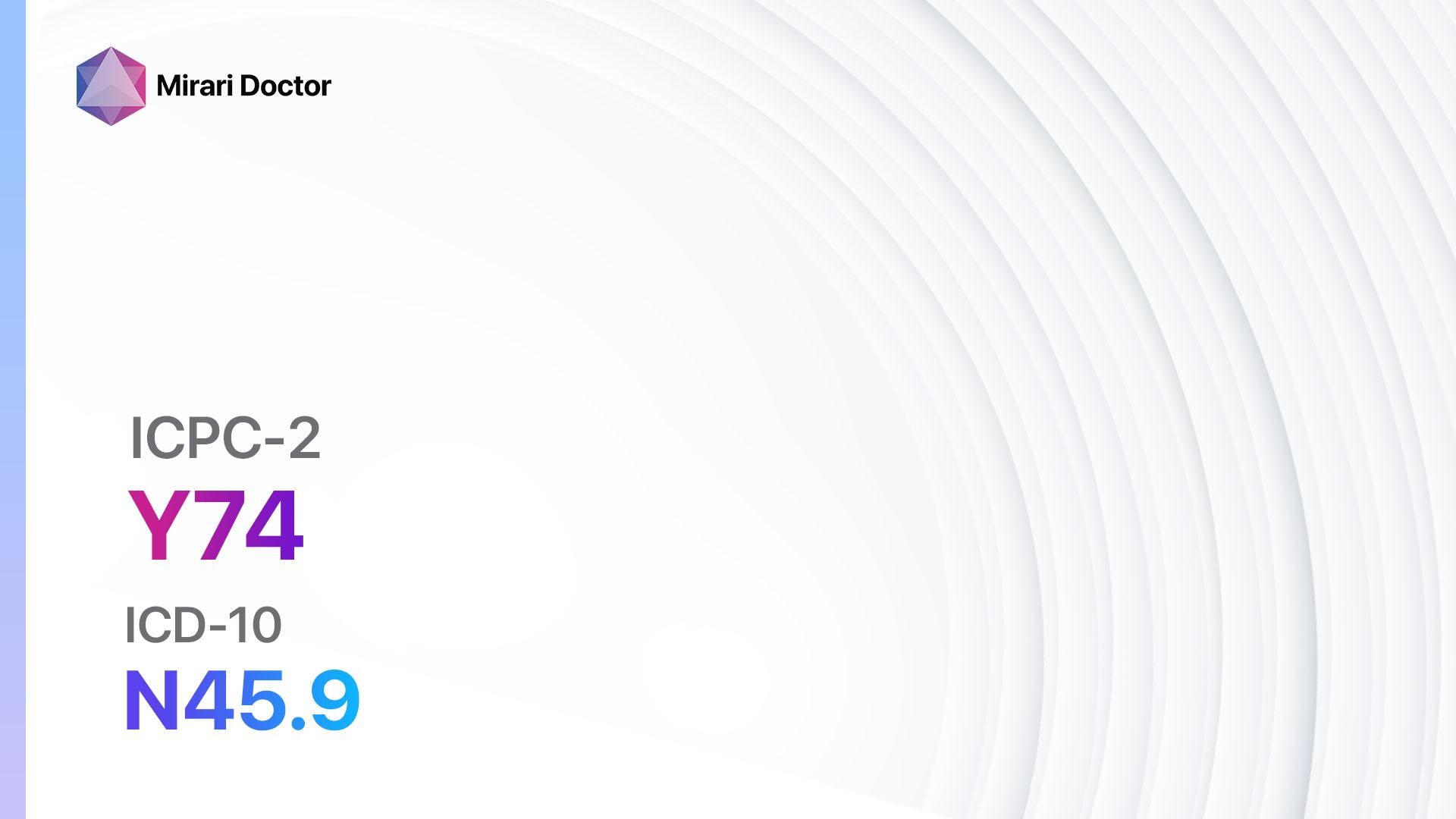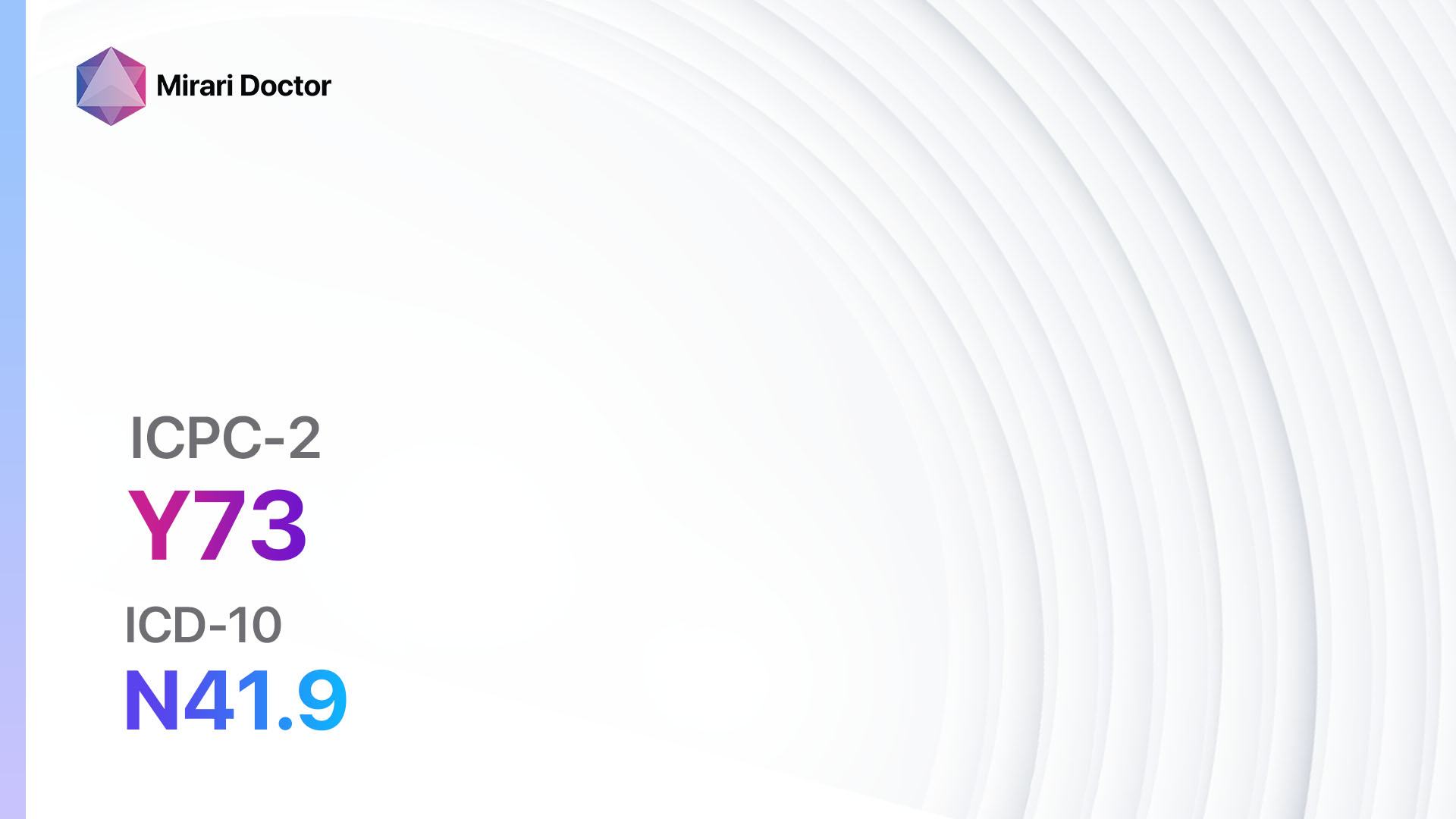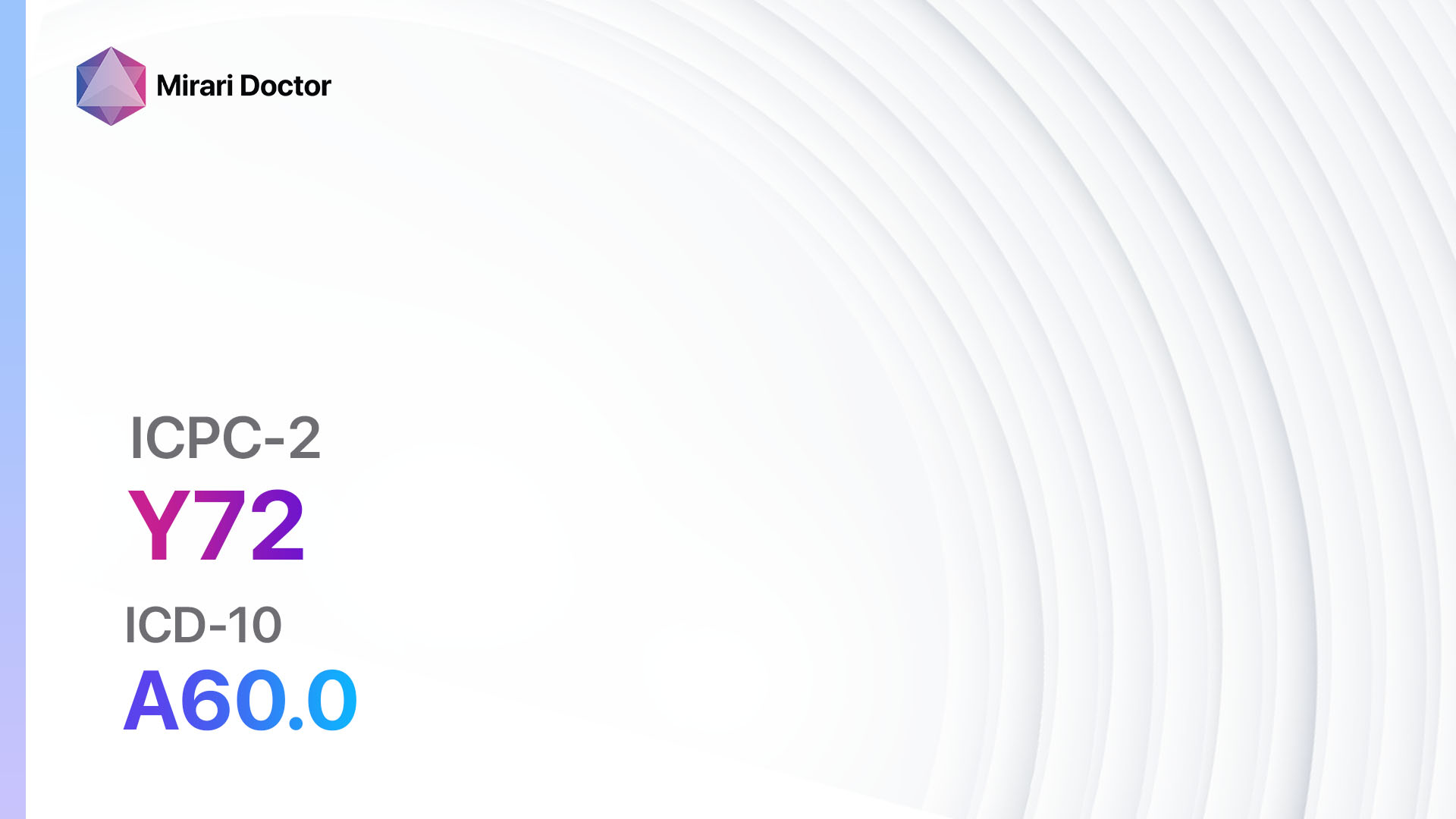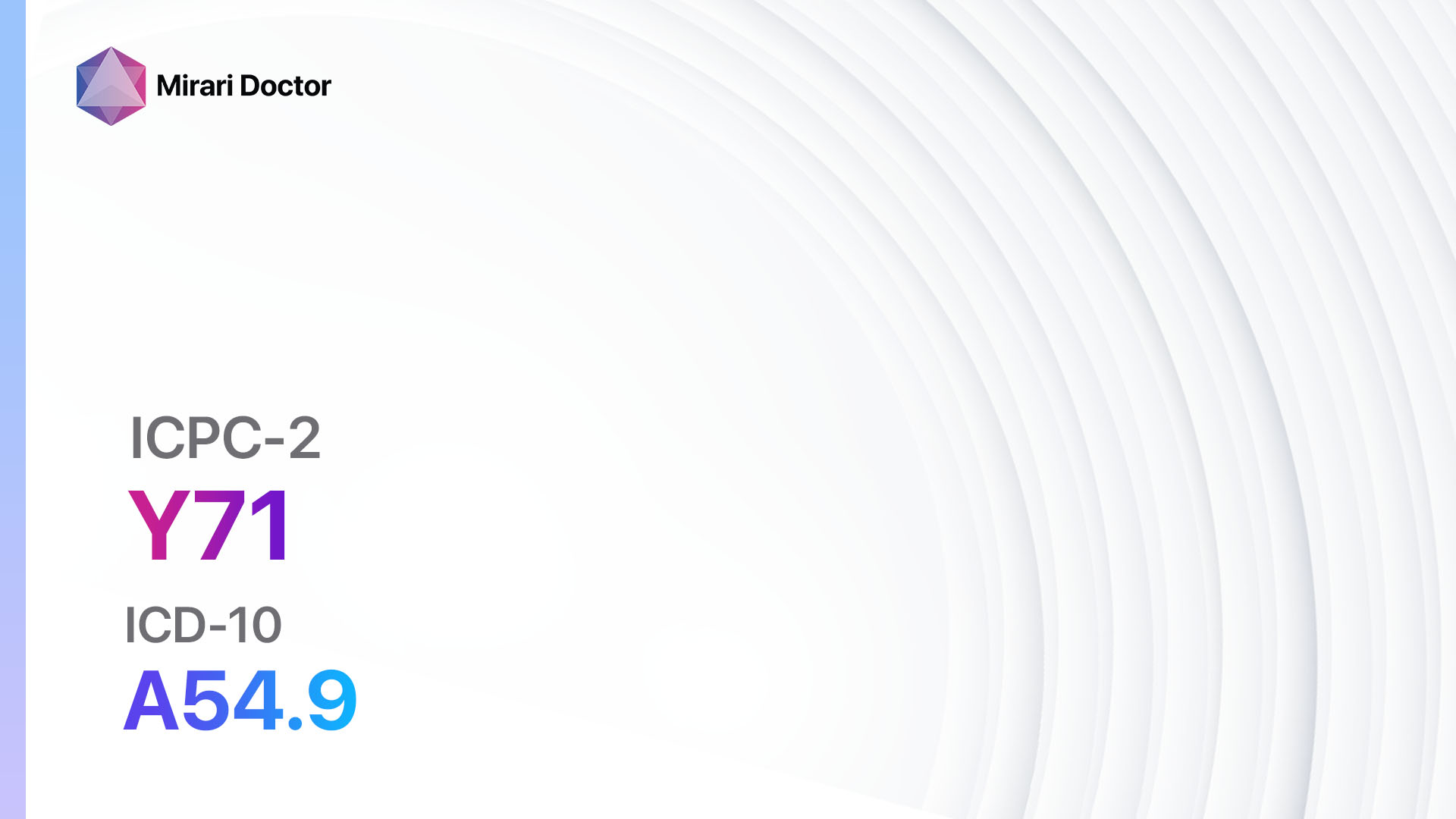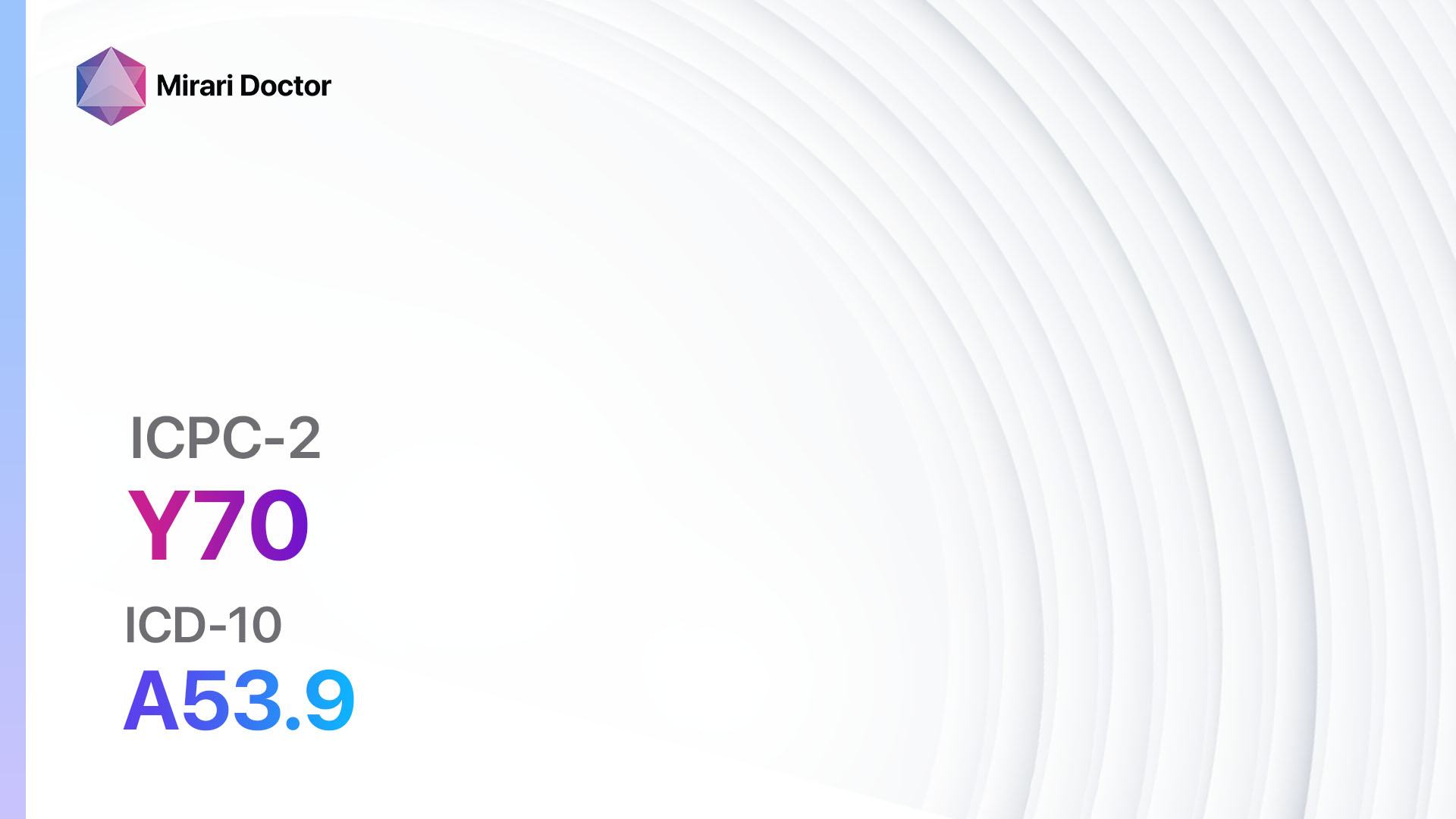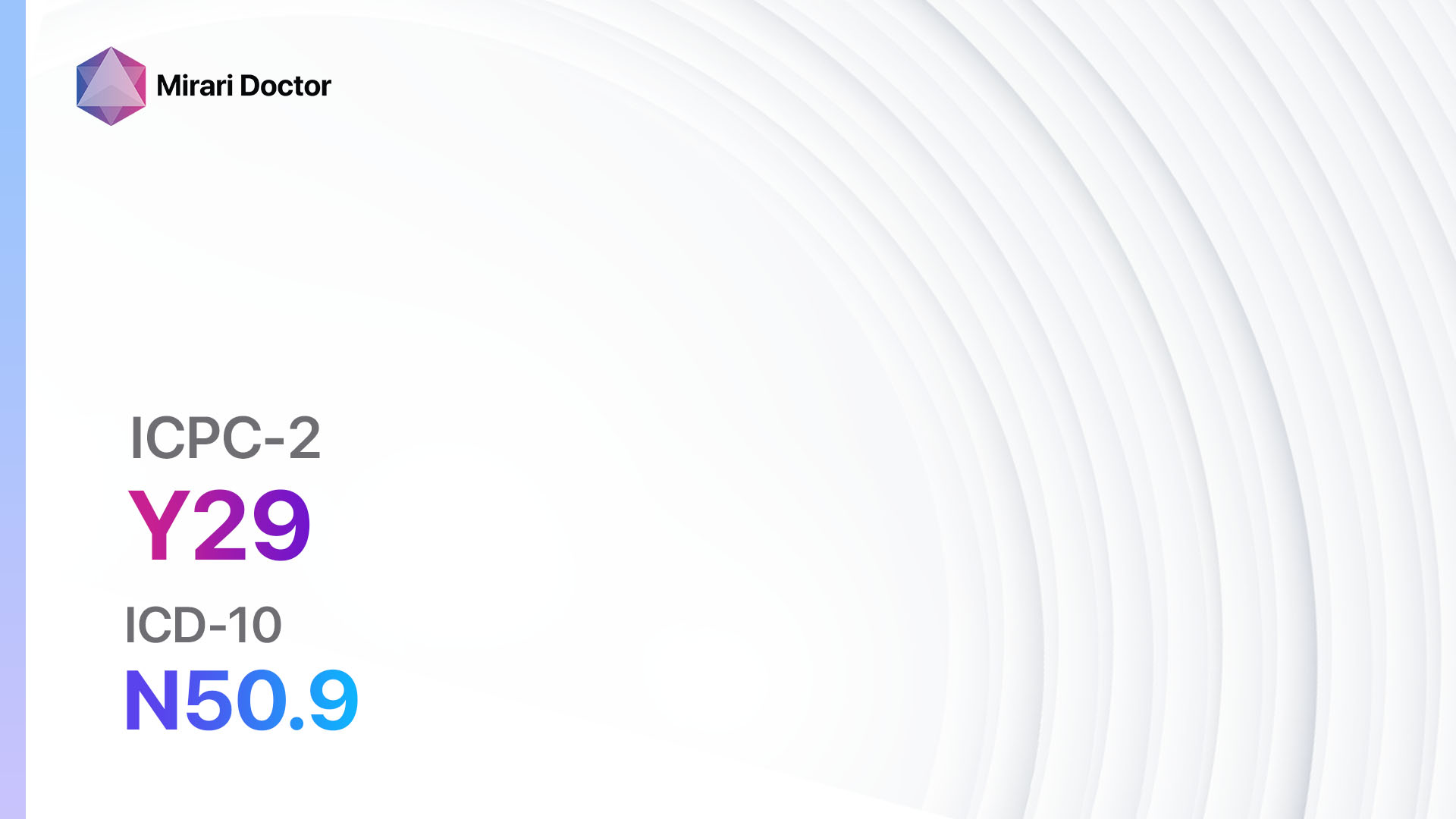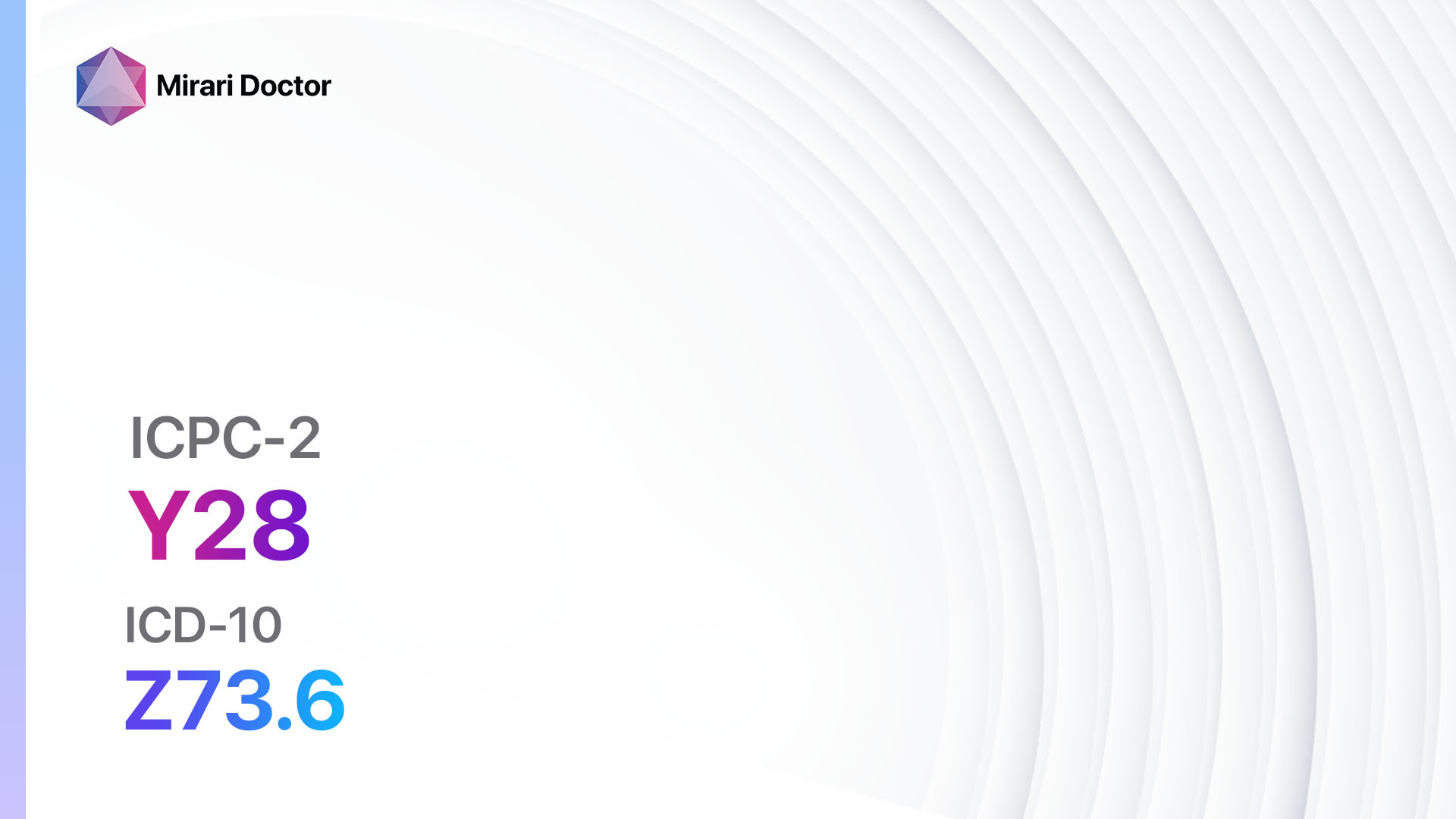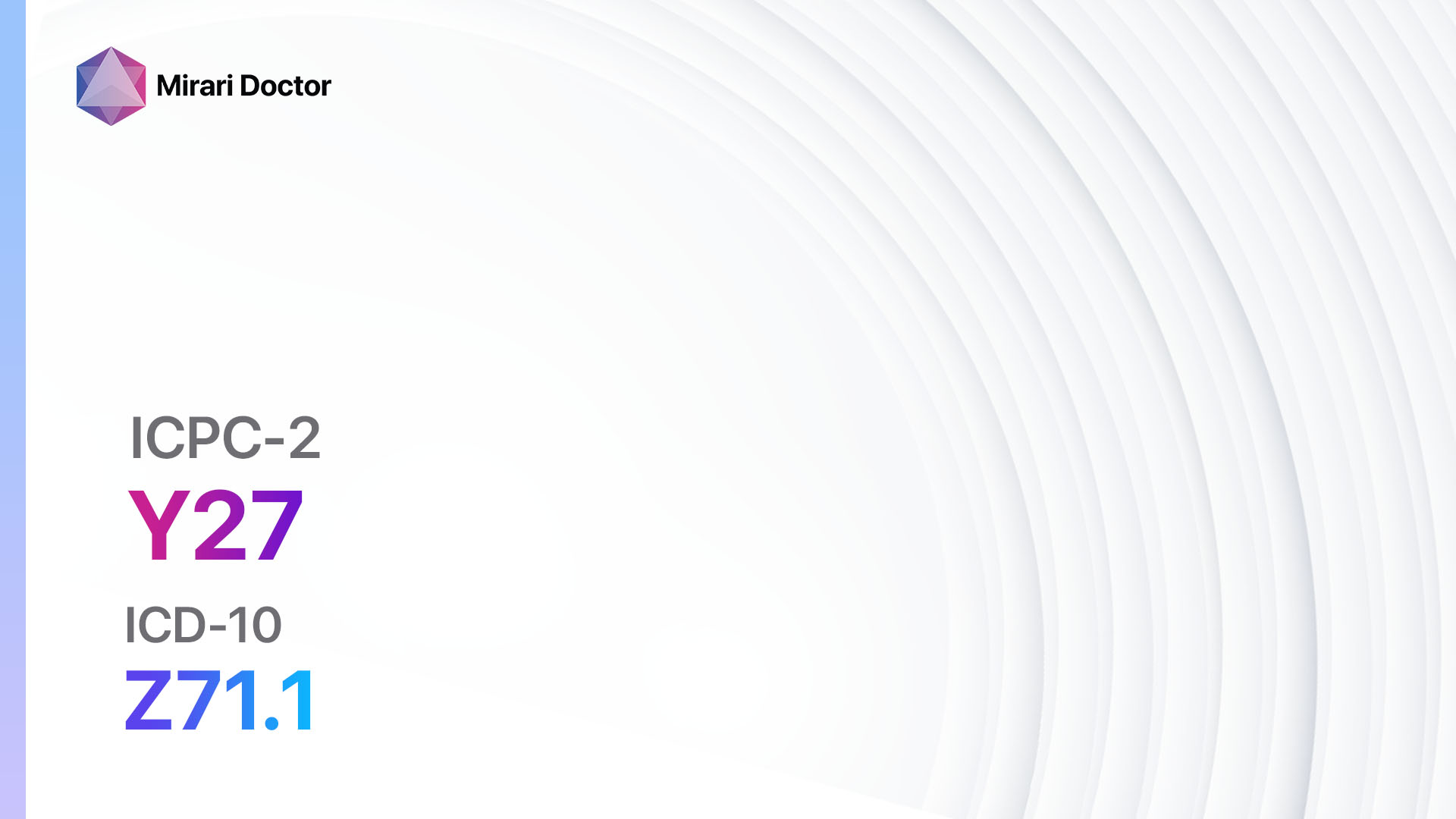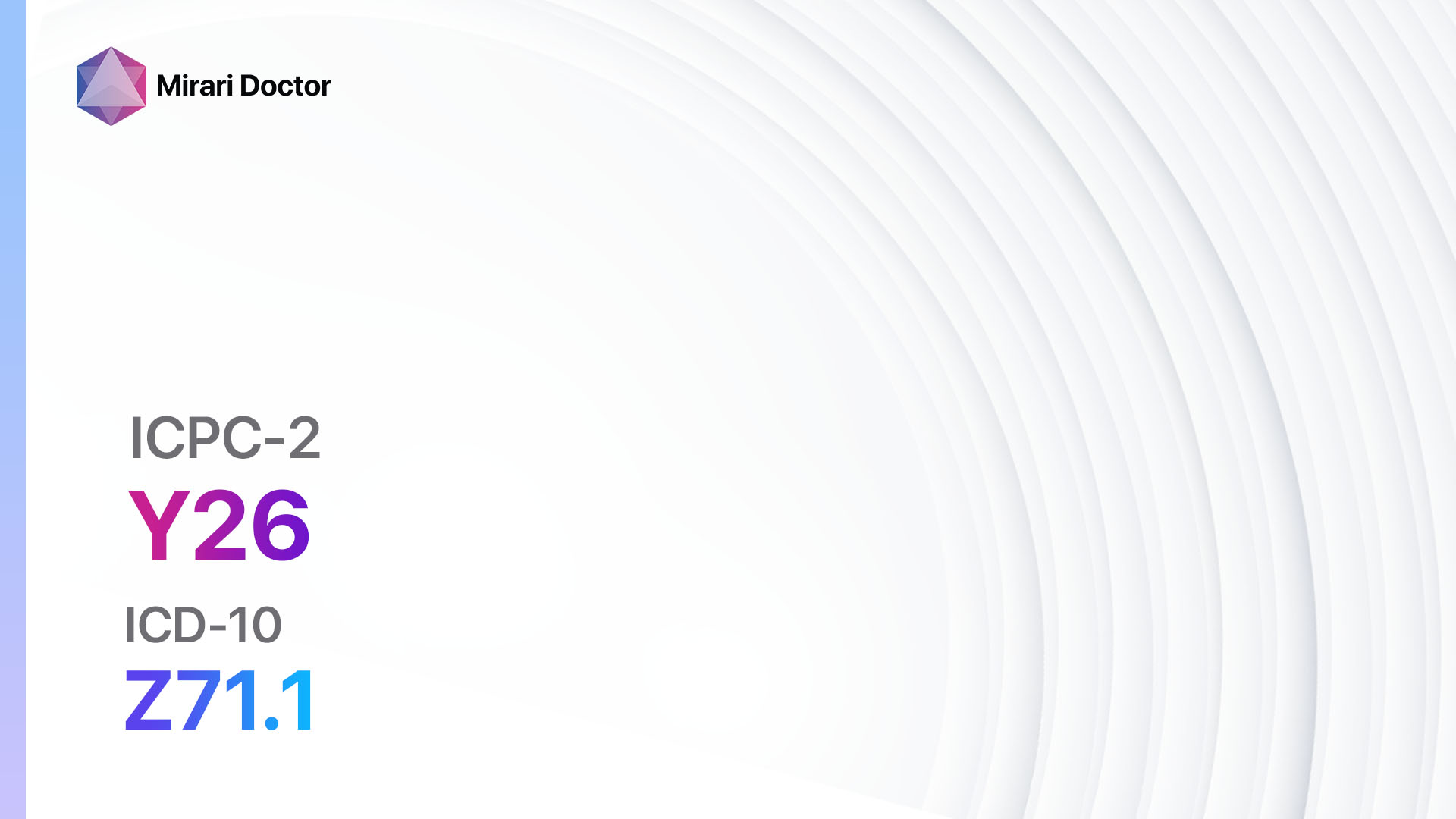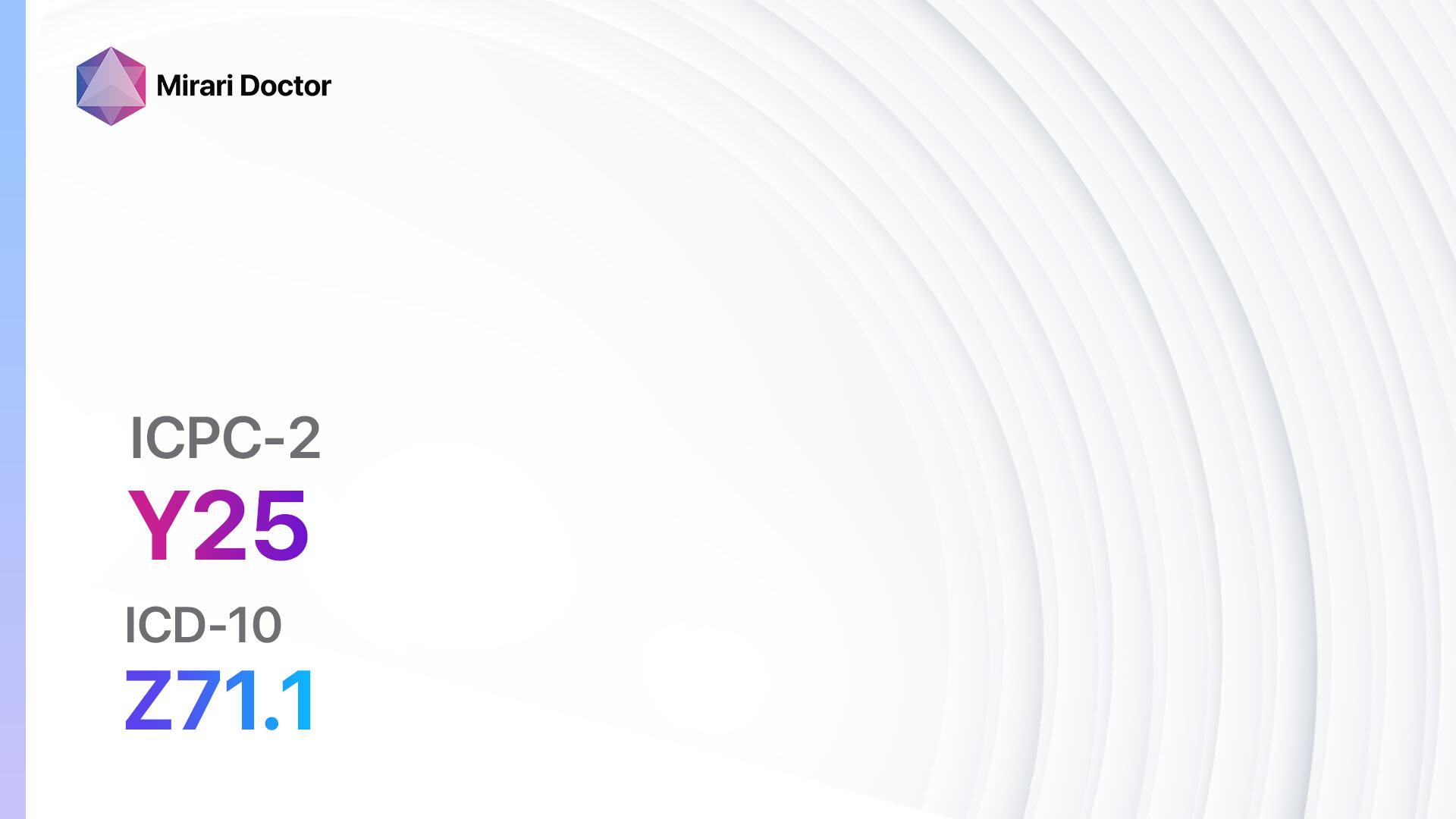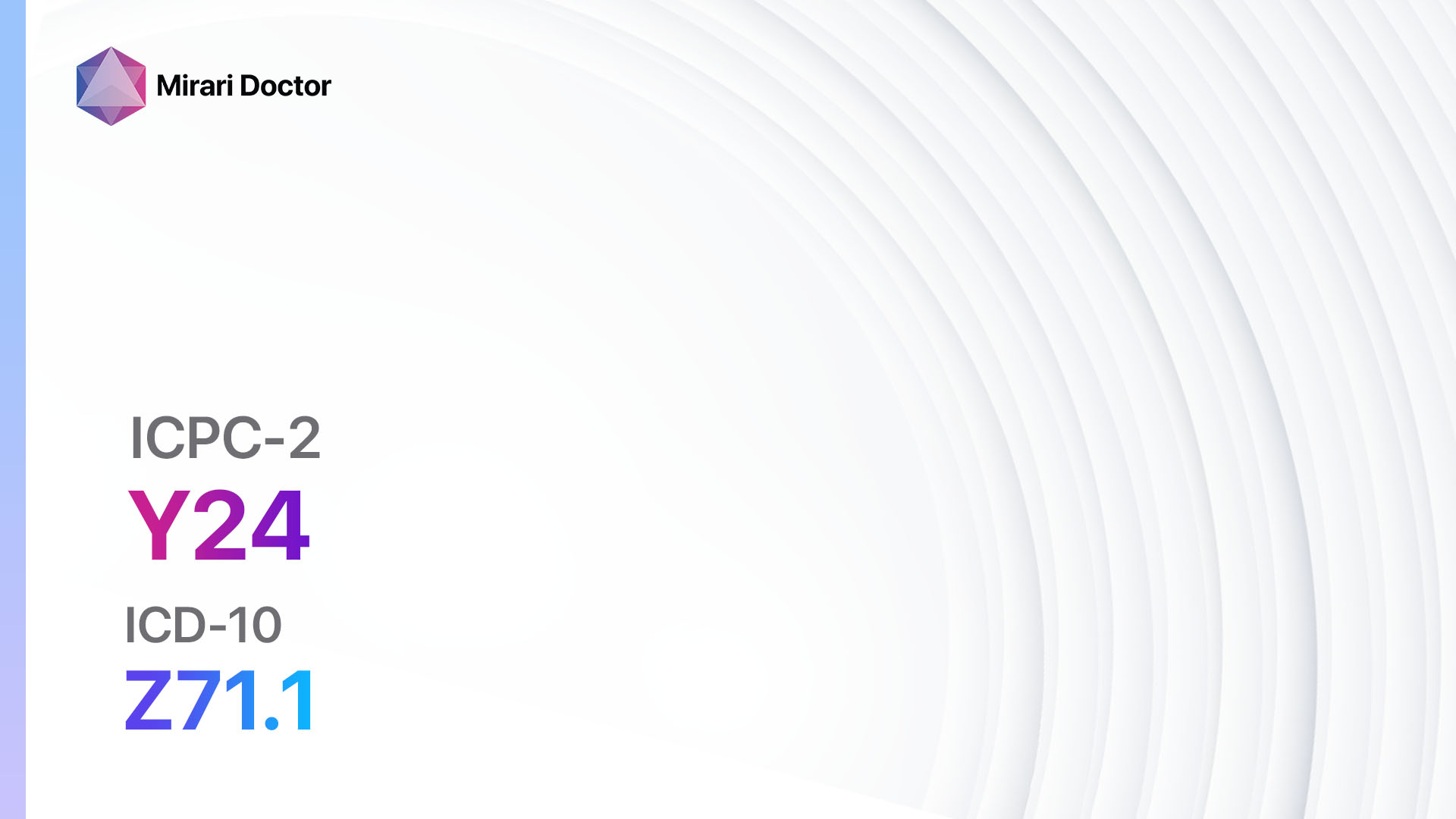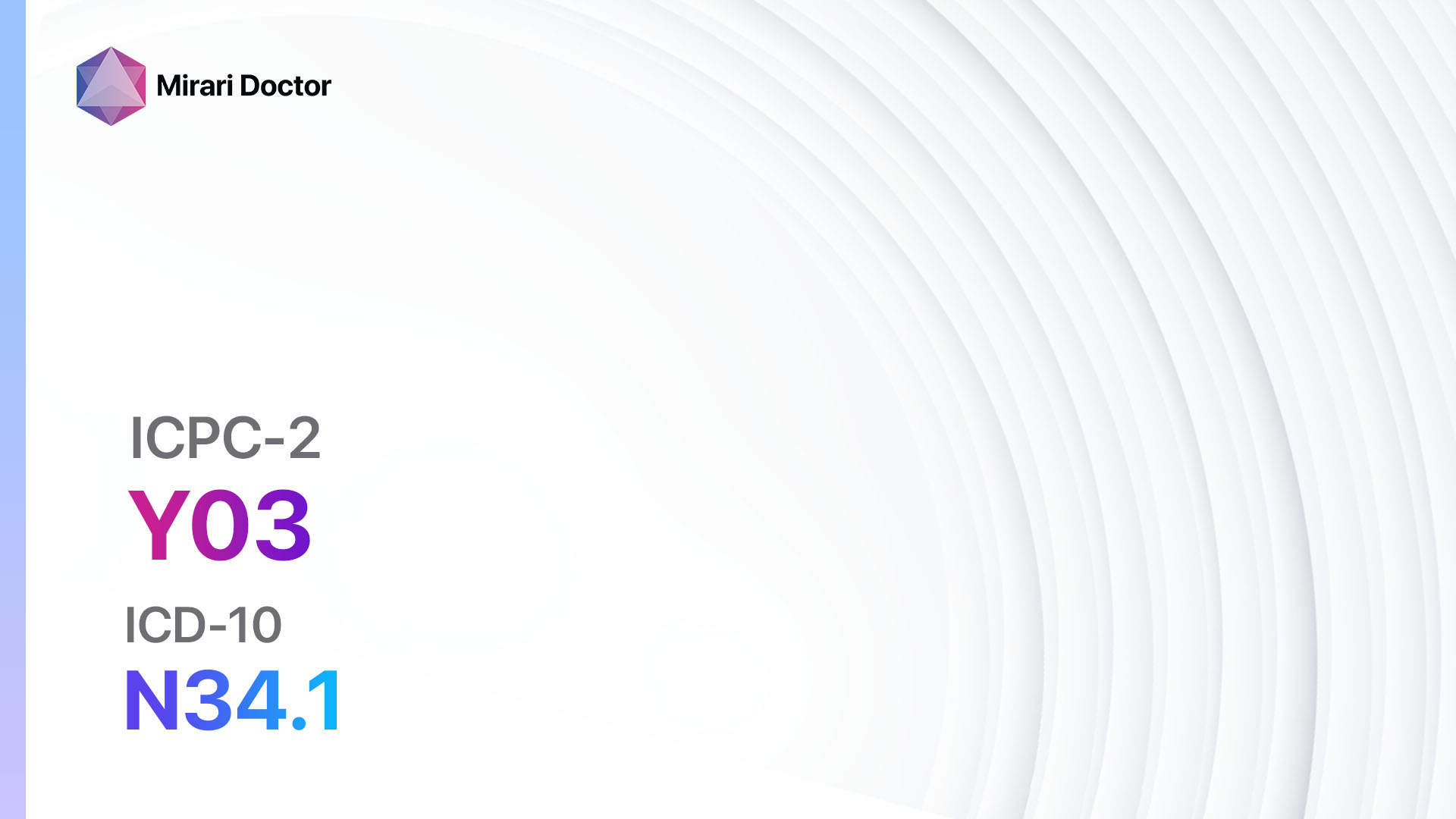
Introduction
Urethral discharge, also known as urethritis, is a condition characterized by the presence of abnormal fluid coming from the urethra. It is a common symptom of various underlying conditions and can be indicative of infection or inflammation in the urinary tract.[1] This guide aims to provide a comprehensive overview of the diagnostic steps, possible interventions, and follow-up care for patients presenting with urethral discharge.
Codes
Symptoms
- Abnormal discharge from the urethra
- Discomfort or pain during urination[2]
Causes
- Sexually transmitted infections (STIs) such as gonorrhea or chlamydia
- Non-sexually transmitted infections, including urinary tract infections (UTIs)
- Inflammation of the urethra due to trauma or irritation
- Other underlying medical conditions[3]
Diagnostic Steps
Medical History
- Gather information about the patient’s sexual history, including recent sexual partners and any history of unprotected sex
- Ask about urinary symptoms such as frequency, urgency, or burning sensation during urination
- Inquire about recent urinary tract infections or other related medical conditions[4]
Physical Examination
- Inspect the external genitalia for any signs of inflammation, lesions, or discharge
- Palpate the urethra to assess for tenderness or swelling
- Perform a digital rectal examination to evaluate the prostate gland (in males)[5]
Laboratory Tests
- Urine analysis: Assess for the presence of white blood cells, red blood cells, or bacteria in the urine
- Urine culture: Identify the specific bacteria causing the infection, if present
- Urethral swab: Collect a sample from the urethra to test for STIs such as gonorrhea or chlamydia
- Blood tests: Check for markers of infection or inflammation, such as C-reactive protein (CRP) or erythrocyte sedimentation rate (ESR)[6]
Diagnostic Imaging
- In most cases, diagnostic imaging is not necessary for the evaluation of urethral discharge. However, in certain situations, imaging studies may be recommended to assess the upper urinary tract or rule out complications.
- Ultrasound: Can be used to assess the kidneys and bladder for any abnormalities or obstruction
- CT scan: Provides detailed images of the urinary tract and surrounding structures
- MRI: May be warranted in specific cases to evaluate for structural abnormalities or complications[7]
Other Tests
- Additional tests may be required based on the clinical presentation and suspected underlying cause of urethral discharge. These may include:
- Serologic tests for STIs (e.g., syphilis, HIV)
- Urethroscopy: Visual examination of the urethra using a thin, flexible tube
- Biopsy: Removal of a small tissue sample for further analysis[8]
Follow-up and Patient Education
- Provide appropriate treatment based on the underlying cause of the urethral discharge
- Educate the patient about safe sexual practices and the importance of using barrier methods to prevent STIs
- Discuss the importance of completing the full course of medication and the need for follow-up visits to monitor treatment response
- Advise the patient to seek medical attention if symptoms worsen or persist after treatment[9][10]
Possible Interventions
Traditional Interventions
Medications:
Top 5 drugs for urethral discharge:
- Ceftriaxone:
- Cost: $10-$100 for a single dose.
- Contraindications: Hypersensitivity to cephalosporins.
- Side effects: Diarrhea, nausea, rash.
- Severe side effects: Anaphylaxis, severe gastrointestinal reactions.
- Drug interactions: None of significant concern.
- Warnings: None.
- Azithromycin:
- Cost: $10-$50 for a single dose.
- Contraindications: Hypersensitivity to macrolide antibiotics.
- Side effects: Nausea, diarrhea, abdominal pain.
- Severe side effects: Liver toxicity, cardiac arrhythmias.
- Drug interactions: None of significant concern.
- Warnings: None.
- Doxycycline:
- Cost: $10-$50 for a 10-day course.
- Contraindications: Hypersensitivity to tetracycline antibiotics, pregnancy.
- Side effects: Nausea, vomiting, photosensitivity.
- Severe side effects: Severe skin reactions, liver toxicity.
- Drug interactions: Calcium supplements, antacids.
- Warnings: Avoid use in children under 8 years of age.
- Metronidazole:
- Cost: $10-$50 for a 7-day course.
- Contraindications: Hypersensitivity to nitroimidazole derivatives, pregnancy.
- Side effects: Metallic taste, nausea, headache.
- Severe side effects: Neurotoxicity, Stevens-Johnson syndrome.
- Drug interactions: Alcohol, warfarin.
- Warnings: Avoid alcohol during treatment and for at least 24 hours after completion.
- Ciprofloxacin:
- Cost: $10-$50 for a 7-day course.
- Contraindications: Hypersensitivity to fluoroquinolone antibiotics, pregnancy.
- Side effects: Nausea, diarrhea, dizziness.
- Severe side effects: Tendon rupture, central nervous system effects.
- Drug interactions: Antacids, warfarin.
- Warnings: Increased risk of tendinitis and tendon rupture, especially in older adults.
Surgical Procedures:
- In most cases, surgical intervention is not necessary for the treatment of urethral discharge. However, in rare instances where complications arise or other underlying conditions require surgical management, the following procedures may be considered:
- Urethral dilation: Widening of the urethra to relieve strictures or obstructions
- Urethroplasty: Surgical reconstruction of the urethra
- Prostatectomy: Removal of the prostate gland (in select cases)
Alternative Interventions
- Herbal supplements: Some herbal remedies, such as cranberry extract or garlic, may have potential antimicrobial properties. Cost: Varies depending on the specific supplement.
- Probiotics: Certain strains of beneficial bacteria may help restore the natural balance of the urinary tract. Cost: $15-$30 per month.
- Pelvic floor exercises: Strengthening the pelvic floor muscles may help improve urinary symptoms. Cost: None.
- Stress reduction techniques: Managing stress and anxiety levels may have a positive impact on urinary symptoms. Cost: None.
- Acupuncture: Traditional Chinese medicine practice that may help alleviate symptoms of urethral discharge. Cost: $60-$120 per session.
Lifestyle Interventions
- Avoiding irritants: Encourage the patient to avoid potential irritants such as scented soaps, bubble baths, or harsh detergents that may contribute to urethral inflammation. Cost: Varies.
- Hydration: Promote adequate fluid intake to maintain urinary tract health. Cost: None.
- Safe sexual practices: Educate the patient about the importance of using barrier methods (condoms) to prevent STIs. Cost: Varies depending on the method chosen.
- Healthy diet: Encourage a balanced diet rich in fruits, vegetables, and whole grains to support overall health. Cost: Varies.
- Regular exercise: Engaging in regular physical activity may help improve overall urinary tract health. Cost: Varies.
It is important to note that the cost ranges provided are approximate and may vary depending on the location and availability of the interventions. Patients should consult with their healthcare provider for personalized recommendations and cost considerations.
Mirari Cold Plasma Alternative Intervention
Understanding Mirari Cold Plasma
- Safe and Non-Invasive Treatment: Mirari Cold Plasma is a safe and non-invasive treatment option for various skin conditions. It does not require incisions, minimizing the risk of scarring, bleeding, or tissue damage.
- Efficient Extraction of Foreign Bodies: Mirari Cold Plasma facilitates the removal of foreign bodies from the skin by degrading and dissociating organic matter, allowing easier access and extraction.
- Pain Reduction and Comfort: Mirari Cold Plasma has a local analgesic effect, providing pain relief during the treatment, making it more comfortable for the patient.
- Reduced Risk of Infection: Mirari Cold Plasma has antimicrobial properties, effectively killing bacteria and reducing the risk of infection.
- Accelerated Healing and Minimal Scarring: Mirari Cold Plasma stimulates wound healing and tissue regeneration, reducing healing time and minimizing the formation of scars.
Mirari Cold Plasma Prescription
Video instructions for using Mirari Cold Plasma Device – Y03 Urethral discharge (ICD-10:N34.1)
| Mild | Moderate | Severe |
| Mode setting: 1 (Infection) Location: 0 (Localized) Morning: 15 minutes, Evening: 15 minutes |
Mode setting: 1 (Infection) Location: 0 (Localized) Morning: 30 minutes, Lunch: 30 minutes, Evening: 30 minutes |
Mode setting: 1 (Infection) Location: 0 (Localized) Morning: 30 minutes, Lunch: 30 minutes, Evening: 30 minutes |
| Mode setting: 2 (Wound Healing) Location: 0 (Localized) Morning: 15 minutes, Evening: 15 minutes |
Mode setting: 2 (Wound Healing) Location: 0 (Localized) Morning: 30 minutes, Lunch: 30 minutes, Evening: 30 minutes |
Mode setting: 2 (Wound Healing) Location: 0 (Localized) Morning: 30 minutes, Lunch: 30 minutes, Evening: 30 minutes |
| Mode setting: 3 (Antiviral Therapy) Location: 0 (Localized) Morning: 15 minutes, Evening: 15 minutes |
Mode setting: 3 (Antiviral Therapy) Location: 0 (Localized) Morning: 30 minutes, Lunch: 30 minutes, Evening: 30 minutes |
Mode setting: 3 (Antiviral Therapy) Location: 0 (Localized) Morning: 30 minutes, Lunch: 30 minutes, Evening: 30 minutes |
| Mode setting: 7 (Immunotherapy) Location: 1 (Sacrum) Morning: 15 minutes, Evening: 15 minutes |
Mode setting: 7 (Immunotherapy) Location: 1 (Sacrum) Morning: 30 minutes, Lunch: 30 minutes, Evening: 30 minutes |
Mode setting: 7 (Immunotherapy) Location: 1 (Sacrum) Morning: 30 minutes, Lunch: 30 minutes, Evening: 30 minutes |
| Total Morning: 60 minutes approx. $10 USD, Evening: 60 minutes approx. $10 USD |
Total Morning: 120 minutes approx. $20 USD, Lunch: 120 minutes approx. $20 USD, Evening: 120 minutes approx. $20 USD, |
Total Morning: 120 minutes approx. $20 USD, Lunch: 120 minutes approx. $20 USD, Evening: 120 minutes approx. $20 USD, |
| Usual treatment for 7-60 days approx. $140 USD – $1200 USD | Usual treatment for 6-8 weeks approx. $2,520 USD – $3,360 USD |
Usual treatment for 3-6 months approx. $5,400 USD – $10,800 USD
|
 |
|
Use the Mirari Cold Plasma device to treat Urethral discharge effectively.
WARNING: MIRARI COLD PLASMA IS DESIGNED FOR THE HUMAN BODY WITHOUT ANY ARTIFICIAL OR THIRD PARTY PRODUCTS. USE OF OTHER PRODUCTS IN COMBINATION WITH MIRARI COLD PLASMA MAY CAUSE UNPREDICTABLE EFFECTS, HARM OR INJURY. PLEASE CONSULT A MEDICAL PROFESSIONAL BEFORE COMBINING ANY OTHER PRODUCTS WITH USE OF MIRARI.
Step 1: Cleanse the Skin
- Start by cleaning the affected area of the skin with a gentle cleanser or mild soap and water. Gently pat the area dry with a clean towel.
Step 2: Prepare the Mirari Cold Plasma device
- Ensure that the Mirari Cold Plasma device is fully charged or has fresh batteries as per the manufacturer’s instructions. Make sure the device is clean and in good working condition.
- Switch on the Mirari device using the power button or by following the specific instructions provided with the device.
- Some Mirari devices may have adjustable settings for intensity or treatment duration. Follow the manufacturer’s instructions to select the appropriate settings based on your needs and the recommended guidelines.
Step 3: Apply the Device
- Place the Mirari device in direct contact with the affected area of the skin. Gently glide or hold the device over the skin surface, ensuring even coverage of the area experiencing.
- Slowly move the Mirari device in a circular motion or follow a specific pattern as indicated in the user manual. This helps ensure thorough treatment coverage.
Step 4: Monitor and Assess:
- Keep track of your progress and evaluate the effectiveness of the Mirari device in managing your Urethral discharge. If you have any concerns or notice any adverse reactions, consult with your health care professional.
Note
This guide is for informational purposes only and should not replace the advice of a medical professional. Always consult with your healthcare provider or a qualified medical professional for personal advice, diagnosis, or treatment. Do not solely rely on the information presented here for decisions about your health. Use of this information is at your own risk. The authors of this guide, nor any associated entities or platforms, are not responsible for any potential adverse effects or outcomes based on the content.
Mirari Cold Plasma System Disclaimer
- Purpose: The Mirari Cold Plasma System is a Class 2 medical device designed for use by trained healthcare professionals. It is registered for use in Thailand and Vietnam. It is not intended for use outside of these locations.
- Informational Use: The content and information provided with the device are for educational and informational purposes only. They are not a substitute for professional medical advice or care.
- Variable Outcomes: While the device is approved for specific uses, individual outcomes can differ. We do not assert or guarantee specific medical outcomes.
- Consultation: Prior to utilizing the device or making decisions based on its content, it is essential to consult with a Certified Mirari Tele-Therapist and your medical healthcare provider regarding specific protocols.
- Liability: By using this device, users are acknowledging and accepting all potential risks. Neither the manufacturer nor the distributor will be held accountable for any adverse reactions, injuries, or damages stemming from its use.
- Geographical Availability: This device has received approval for designated purposes by the Thai and Vietnam FDA. As of now, outside of Thailand and Vietnam, the Mirari Cold Plasma System is not available for purchase or use.
References
- Workowski KA, Bolan GA; Centers for Disease Control and Prevention. Sexually transmitted diseases treatment guidelines, 2015. MMWR Recomm Rep. 2015;64(RR-03):1-137.
- Brill JR. Diagnosis and treatment of urethritis in men. Am Fam Physician. 2010;81(7):873-878.
- Gaydos C, Maldeis NE, Hardick A, Hardick J, Quinn TC. Mycoplasma genitalium as a contributor to the multiple etiologies of cervicitis in women attending sexually transmitted disease clinics. Sex Transm Dis. 2009;36(10):598-606.
- Bachmann LH, Johnson RE, Cheng H, et al. Nucleic acid amplification tests for diagnosis of Neisseria gonorrhoeae and Chlamydia trachomatis rectal infections. J Clin Microbiol. 2010;48(5):1827-1832.
- Moi H, Blee K, Horner PJ. Management of non-gonococcal urethritis. BMC Infect Dis. 2015;15:294.
- Schwebke JR, Rompalo A, Taylor S, et al. Re-evaluating the treatment of nongonococcal urethritis: emphasizing emerging pathogens–a randomized clinical trial. Clin Infect Dis. 2011;52(2):163-170.
- Wagenlehner FM, Brockmeyer NH, Discher T, Friese K, Wichelhaus TA. The Presentation, Diagnosis, and Treatment of Sexually Transmitted Infections. Dtsch Arztebl Int. 2016;113(1-02):11-22.
- Horner PJ, Blee K, Falk L, van der Meijden W, Moi H. 2016 European guideline on the management of non-gonococcal urethritis. Int J STD AIDS. 2016;27(11):928-937.
- Wetmore CM, Manhart LE, Lowens MS, et al. Demographic, behavioral, and clinical characteristics of men with nongonococcal urethritis differ by etiology: a case-comparison study. Sex Transm Dis. 2011;38(3):180-186.
- Bradshaw CS, Tabrizi SN, Read TR, et al. Etiologies of nongonococcal urethritis: bacteria, viruses, and the association with orogenital exposure. J Infect Dis. 2006;193(3):336-345.
Related articles
Made in USA


